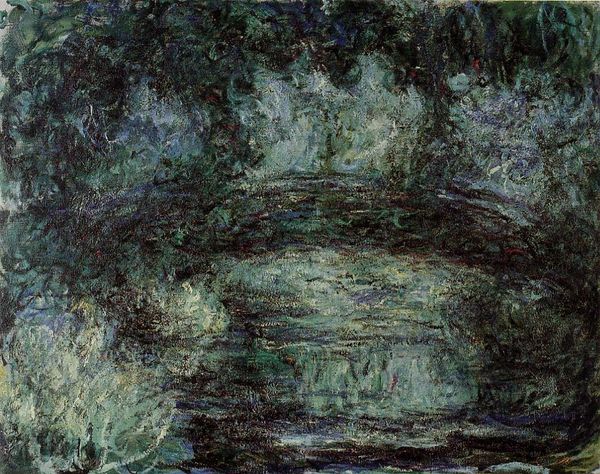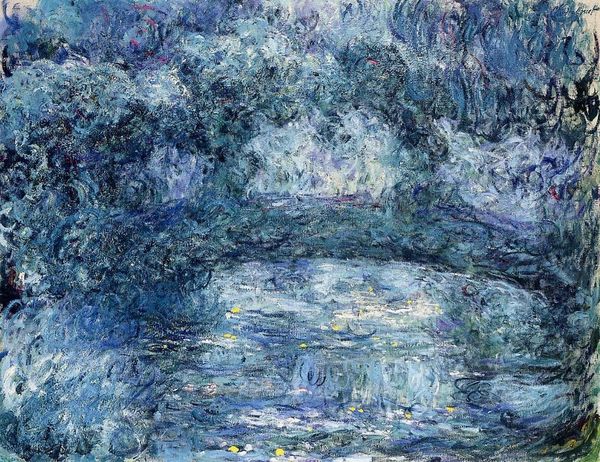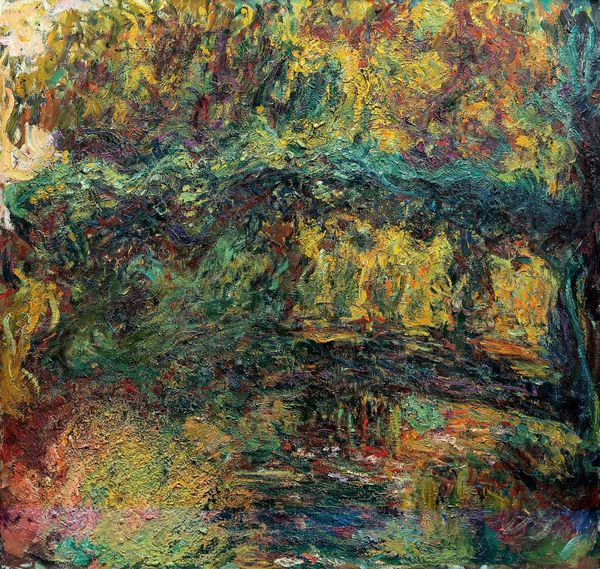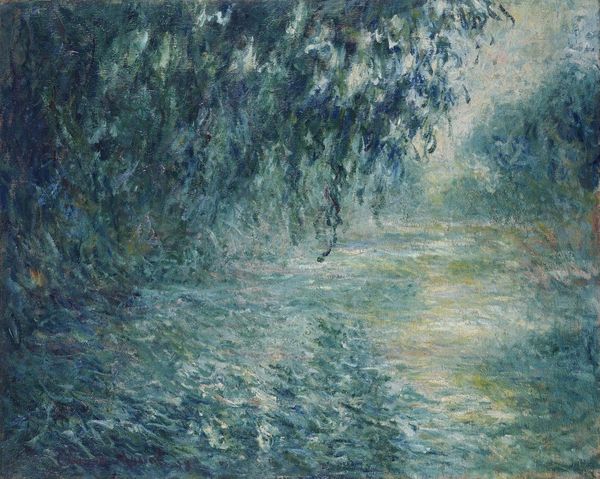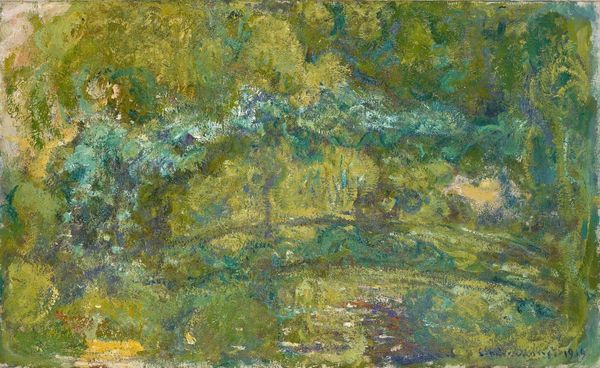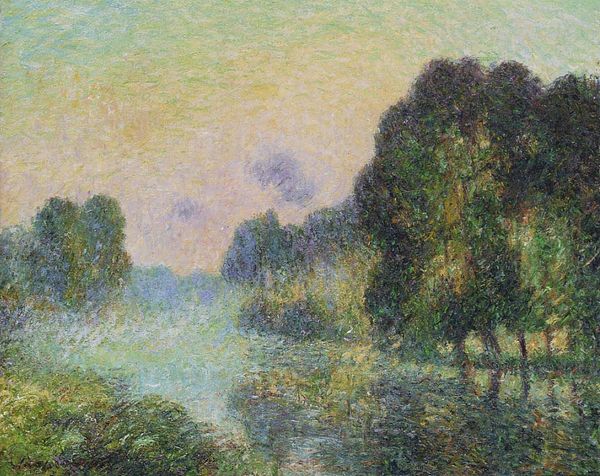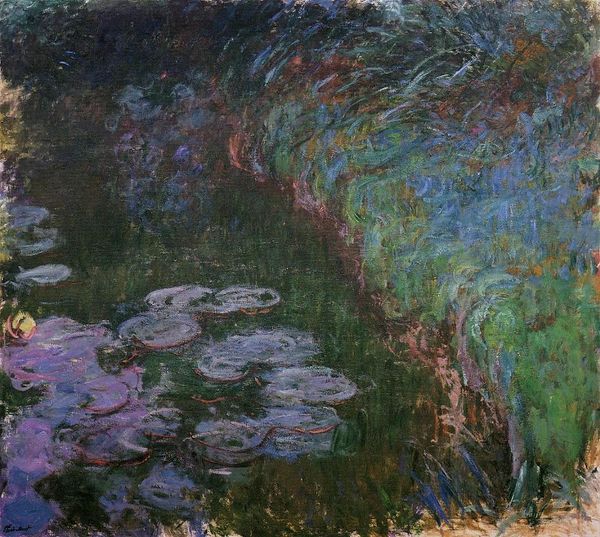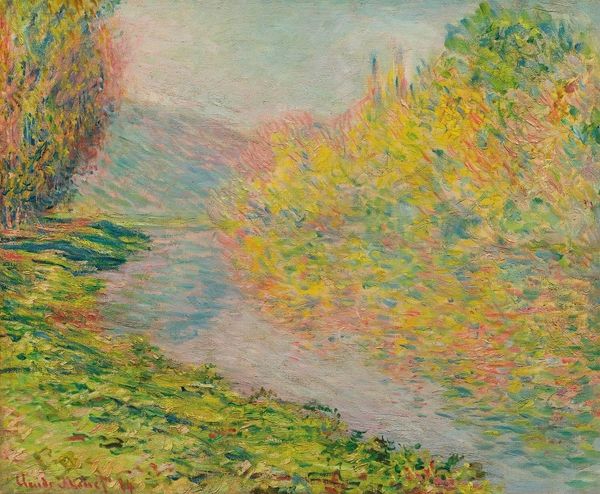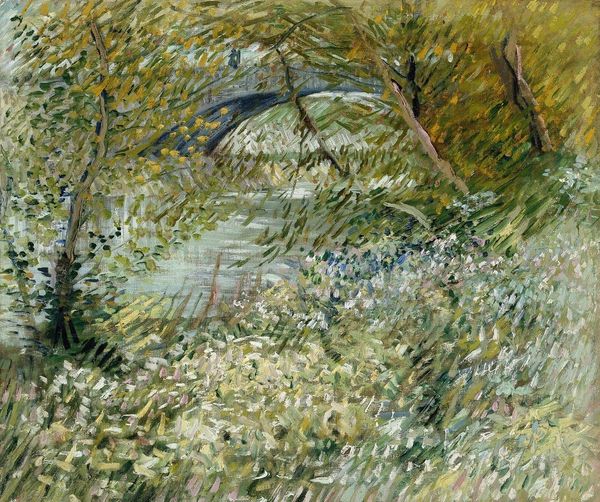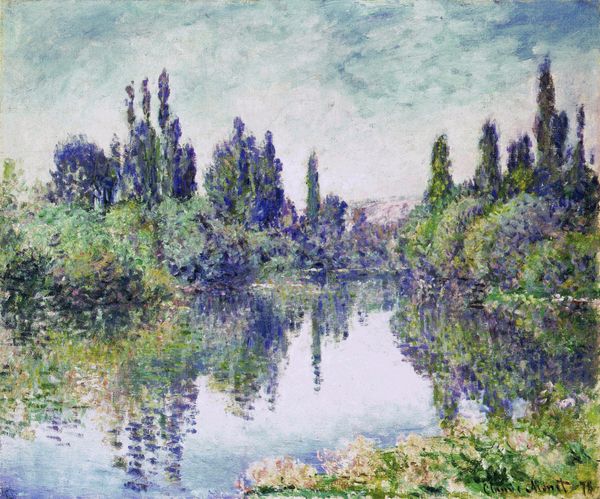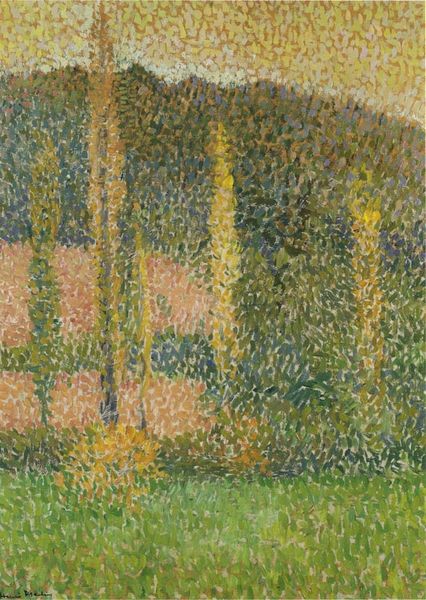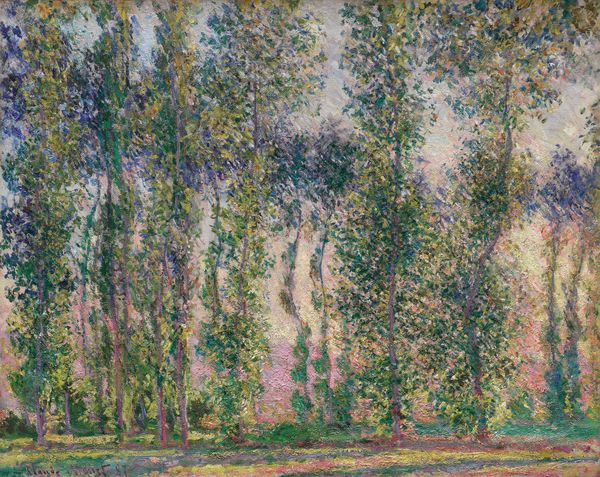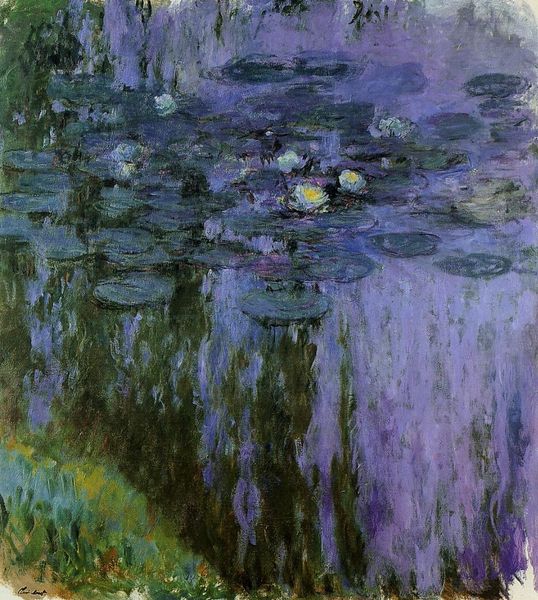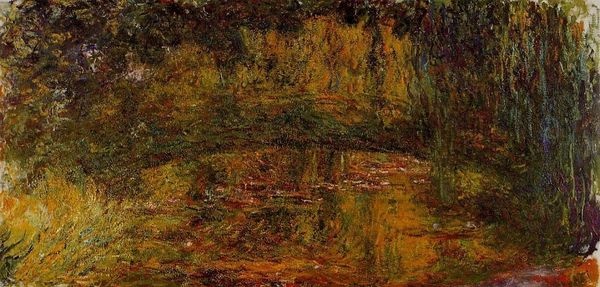
Copyright: Public Domain: Artvee
Curator: Here we have Claude Monet's "The Japanese Bridge", likely painted between 1919 and 1924. Notice how the oil paint is layered to create a sense of depth. Editor: The overall impression is one of immersive tranquility, yet something about this scene feels veiled. Like a memory struggling to surface. The heavy greens and blues definitely create that mood. Curator: Observe the bridge's structure—the slightly off-center placement anchors the composition. The reflection of the bridge, bisected by the horizontal plane of the water's surface, creates a beautiful symmetry, a dialogue between form and shadow. Editor: It makes me think of bridges in Asian art—their symbolic importance. In many cultures, bridges represent transition, passages between states of being, between life and the afterlife even. Monet’s consistent return to this subject is itself symbolic of the bridge as a threshold. Curator: Interesting you should note the 'threshold' idea; from a structural standpoint, the bridge serves as a liminal zone between the heavily worked areas above and below the reflected plane of water. This reflects Monet's continuous interest in how natural light sculpts surfaces. Editor: Absolutely. And light has always been symbolic in artistic interpretation, the source of insight and truth in Renaissance works, for instance. Here, the obscured light, almost filtered, points perhaps to the obfuscations of time and recollection. It calls upon art traditions through which similar elements have shaped our emotions for centuries. Curator: Though Monet might refute this—I doubt his objective was the symbolic—his consistent observation of form results in the ethereal quality to which you refer, blurring any definitive edge separating nature and impression, subject and representation. Editor: Fair point. Nevertheless, for viewers like us now, these images can operate on multiple planes simultaneously—the formal elements Monet explored coexist with potent symbolic resonances drawn from history and the collective consciousness. I appreciate our looking at these layered interpretations that allow us to keep finding something fresh to reflect on. Curator: Indeed. What a powerful visual statement this painting becomes when it marries both structural observation with the symbolic weight of cultural history.
Comments
No comments
Be the first to comment and join the conversation on the ultimate creative platform.
